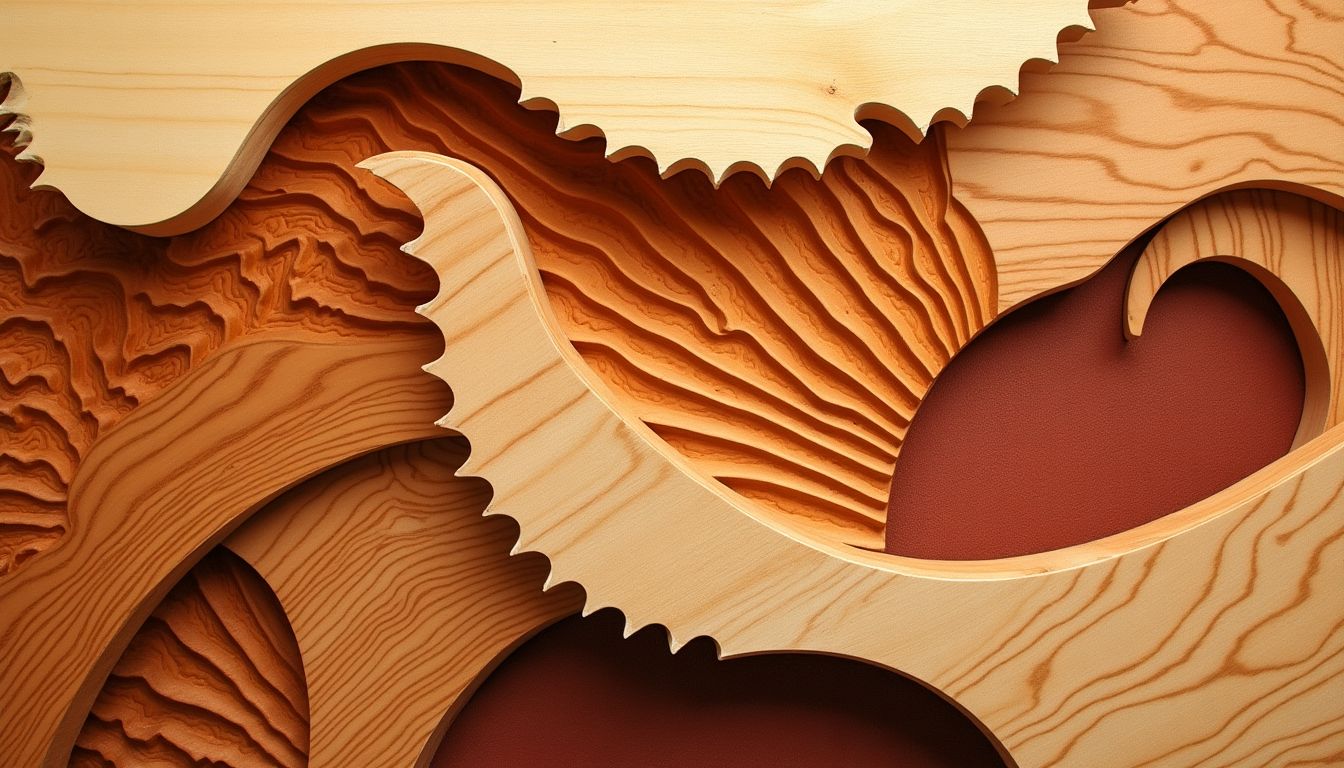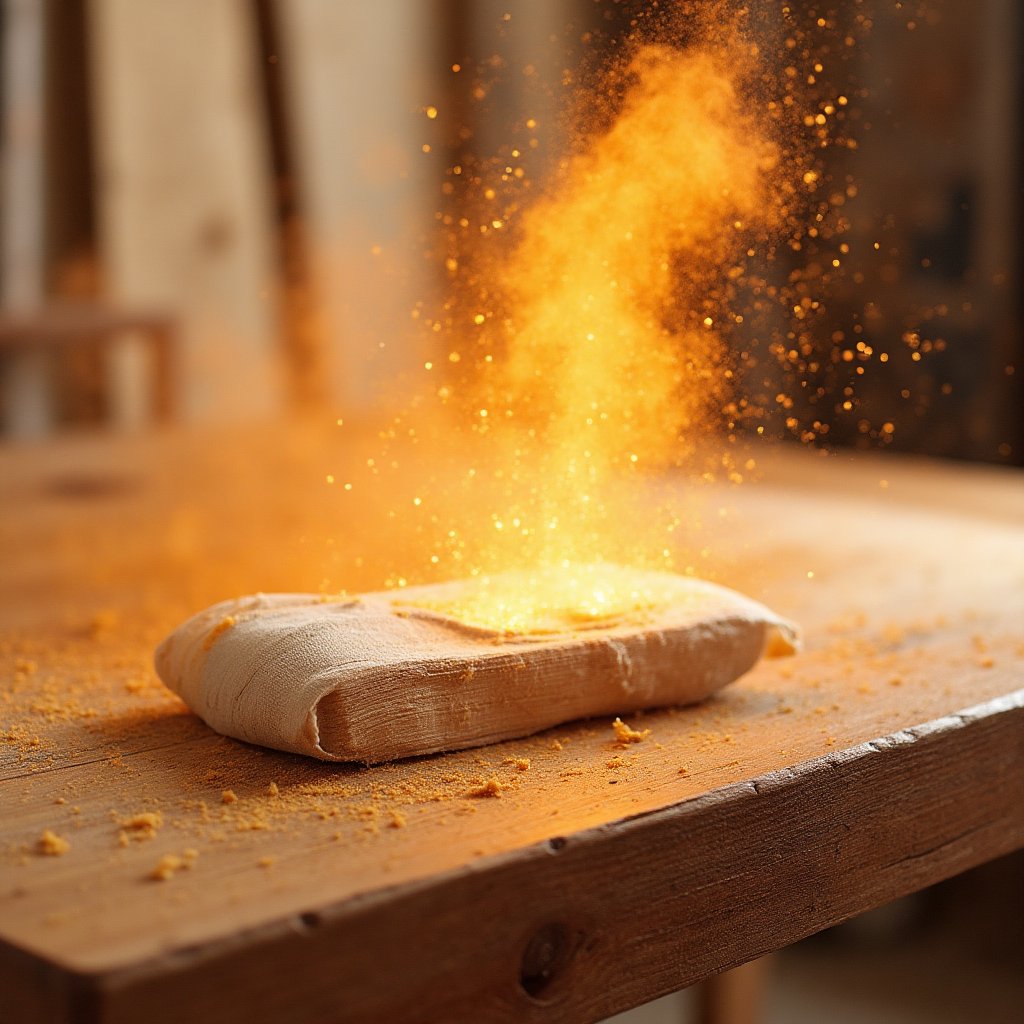Have you ever wondered what truly distinguishes a master woodworker from an amateur? Is it just years of experience, or is there a deeper, almost mythical quality that sets them apart? From the intricate woodwork of Japanese temples to the handcrafted furniture of Europe’s Renaissance, master woodworkers have left an indelible mark on history. But what exactly do we call these artisans, and how do they define their craft in the modern era? This article delves into the fascinating world of woodworking, exploring the terminology used for skilled and expert woodworkers, their roles in the industry, and how their craft continues to evolve. Whether you’re a woodworking enthusiast, a beginner looking to learn, or simply curious about the artistry behind the craft, this guide will provide you with a comprehensive understanding of what it means to be a master woodworker. We’ll also explore how technology, particularly AI, is shaping the future of woodworking, and provide a detailed roadmap for aspiring woodworkers to achieve mastery. Join us as we unravel the secrets of the craft, celebrate its history, and imagine its future.
1. The Terminology of Master Woodworkers
1.1 Historical Terms and Their Evolution
The origins of woodworking terminology are deeply rooted in history, tracing back to medieval guilds where craftsmen were organized into specific roles. Terms like "joiner," "cabinetmaker," and "carpenter" have evolved over centuries, reflecting changes in the craft itself. Joiners, for instance, were originally specialized in creating joints for furniture, while carpenters focused on structural woodwork. Cabinetmakers, on the other hand, were renowned for their skill in crafting fine furniture and intricate cabinetry. Today, these terms have expanded and shifted, often used interchangeably, yet they still carry the weight of their historical significance. Understanding these terms is essential for appreciating the depth and breadth of the woodworking tradition.
1.2 Modern Titles and Specializations
In the modern era, the title of a master woodworker can vary widely depending on their specialization. A "furniture maker" might focus on crafting bespoke pieces for homes and offices, while an "artisan woodworker" could be known for creating unique, artistic pieces that push the boundaries of the craft. Some woodworkers even liken themselves to "woodworking artists," emphasizing the creative and expressive aspects of their work. Specialization plays a crucial role in shaping these titles, with each sector of the industry demanding a unique set of skills and knowledge. Whether it’s fine furniture, cabinetry, or sculptural pieces, the title often reflects the artisan’s area of expertise and the complexity of the projects they undertake.
1.3 Regional and Cultural Variations
Woodworking terminology also varies significantly across different cultures and regions, adding a rich layer of diversity to the craft. In Japan, for example, a master woodworker is often referred to as a "tategu-shi," specializing in traditional joinery techniques used in Japanese architecture. In France, the term "ébéniste" is used to describe a highly skilled furniture maker, particularly one who works with veneers and inlays. These cultural contexts not only define the titles but also influence the techniques and styles employed by master woodworkers. Understanding these regional variations offers a broader perspective on the global significance of woodworking and the unique contributions of each culture to the craft.
2. The Path to Becoming a Master Woodworker
2.1 Apprenticeship and Mentorship
Becoming a master woodworker is a journey that often starts with a mentor. In the old days, this meant joining a guild and serving as an apprentice for years. Think of it as the woodworking version of “paying your dues.” You’d sweep floors, fetch tools, and learn the ropes from a seasoned pro. Today, the process isn’t much different—minus the sweeping, unless you’re really into that. Finding a mentor can be as simple as joining a local woodworking club or connecting with experts online. Resources like Ted’s Woodworking also offer step-by-step guidance for beginners.
2.2 Formal Education vs. Self-Taught Mastery
Not everyone needs to go to woodworking school to become a master. Some of the best woodworkers are self-taught. They’ve spent countless hours watching YouTube tutorials, reading blogs like crafts.inthacity.com, and experimenting in their garages. But if you’re the type who loves structure, attending a woodworking school like the North Bennet Street School in Boston might be your jam. Whether you go formal or DIY, the key is practice. And patience. Lots of patience.
2.3 The Importance of Practice and Patience
Woodworking isn’t a sprint; it’s a marathon. You’ll mess up. You’ll cut boards too short, sand too much, and maybe even glue your fingers together (it happens). But every mistake is a lesson. Over time, you’ll develop the muscle memory and instincts that define a master woodworker. Tools like Amazon hand tools can help you refine your skills. Remember, even Michelangelo started with a chisel and a block of marble.
3. The Role of Master Woodworkers in the Industry
3.1 Preserving Traditional Techniques
Master woodworkers are like the historians of the craft. They keep ancient techniques alive, from hand-carving dovetail joints to using traditional finishes. These methods aren’t just for show—they’re often the best way to create durable, beautiful pieces. For example, Japanese joinery techniques have been passed down for centuries and are still used today in modern furniture making. It’s a testament to the timelessness of good craftsmanship.
3.2 Innovation and Modernization
While tradition is important, so is innovation. Master woodworkers today are embracing technology like never before. Tools like CNC machines and laser cutters are revolutionizing the craft, allowing for precision and creativity that would’ve been impossible 50 years ago. But it’s not about replacing old techniques—it’s about enhancing them. Think of it as adding a turbocharger to a classic car. You get the best of both worlds. If you’re looking for cutting-edge tools, check out Amazon’s power tools section.
3.3 Mentoring the Next Generation
Great masters don’t just make beautiful things—they inspire others to do the same. Many woodworkers today are mentoring apprentices, teaching workshops, and sharing their knowledge online. It’s about keeping the craft alive and thriving for future generations. Programs like Fine Woodworking’s workshops are a great way to learn from the pros. After all, the best woodworking knowledge is the kind that gets passed down.
4. The Artistry of Master Woodworkers
4.1 The Intersection of Function and Beauty
Master woodworkers are more than just craftsmen—they are artists who transform raw wood into pieces that are both functional and beautiful. Think about the timeless elegance of a Thos Moser chair or the intricate joinery of a Japanese tansu chest. These pieces are not just tools or furniture; they are expressions of culture, skill, and vision. The best woodworkers understand how to balance practicality with aesthetics, ensuring their creations are not only useful but also inspiring.
Take, for example, the work of George Nakashima, whose organic designs celebrate the natural beauty of wood. His approach shows how a master woodworker can elevate a simple table or chair into a work of art. This intersection of function and beauty is what separates the masters from the amateurs.
4.2 The Role of Creativity and Vision
Creativity is the lifeblood of woodworking. While technical skills are essential, it’s the ability to see beyond the wood grain—to imagine what could be—that defines a true master. Visionaries like Samuel Gragg, who invented the elastic chair in the early 19th century, pushed the boundaries of what wood could do. Their innovations remind us that woodworking is not just about following plans but about daring to create something new.
Here are a few ways master woodworkers foster their creativity:
- Experimenting with designs: Trying out new shapes or techniques can lead to unexpected breakthroughs.
- Drawing inspiration from nature: Many masters, like Nakashima, let the wood’s natural features guide their designs.
- Embracing imperfections: Sometimes, a knot or crack can become the focal point of a piece, adding character and uniqueness.
4.3 The Business of Woodworking
Turning a passion for woodworking into a sustainable career requires more than just skill—it demands business savvy. Master woodworkers must navigate the challenges of marketing, branding, and selling their work. Platforms like Etsy and Instagram have made it easier for artisans to reach a global audience, but standing out in a crowded market takes strategy.
Here’s a breakdown of key steps to build a successful woodworking business:
| Step | Action |
|---|---|
| 1. Define Your Niche | Focus on a specific style or type of product, like custom furniture or wood sculptures. |
| 2. Build a Brand | Create a unique identity through your logo, website, and storytelling. |
| 3. Market Effectively | Use social media, blogs, and partnerships to showcase your work. |
| 4. Sell Strategically | Offer limited editions, collaborate with galleries, or host workshops. |
By combining artistry with business acumen, master woodworkers can turn their craft into a thriving career.
5. The Legacy of Master Woodworkers
5.1 Historical Masterpieces and Their Makers
Throughout history, master woodworkers have left behind legacies that continue to inspire. The Shaker furniture of the 18th and 19th centuries, known for its simplicity and functionality, remains a benchmark for craftsmanship. Similarly, the intricate carvings of Grinling Gibbons, often described as "the woodcarver of kings," showcase the pinnacle of artistic woodworking.
These historical masterpieces remind us that woodworking is not just a trade but a form of storytelling. Each piece carries the mark of its maker, preserving their skills and vision for future generations.
5.2 The Future of Woodworking Mastery
As the world evolves, so does woodworking. Sustainability is becoming a key focus, with masters like Yanko Design championing eco-friendly practices. From using reclaimed wood to adopting low-impact finishes, the next generation of woodworkers is redefining what it means to be a master.
Technology is also playing a role. Tools like SketchUp and CNC machines are making it easier to design and produce complex pieces, while still honoring traditional techniques. The future of woodworking lies in this blend of old and new.
5.3 Recognizing and Celebrating Mastery
Recognition is crucial for preserving the craft. Awards like the Woodworking Network Awards and the American Craft Council Awards highlight the achievements of master woodworkers, ensuring their work gets the attention it deserves. Communities like Reddit’s woodworking forum also provide a space for sharing knowledge and celebrating progress.
By honoring the past and embracing the future, we can ensure that the legacy of master woodworkers continues to inspire and innovate.
6. AI Solutions: How Could AI Tackle This Issue?
6.1 How AI Could Revolutionize Woodworking Terminology and Mastery
Artificial Intelligence is poised to transform the woodworking industry in ways that were unimaginable just a decade ago. From automating tedious tasks to creating entirely new workflows, AI offers tools that can elevate both beginners and master woodworkers alike. Imagine a world where AI not only simplifies the learning curve but also preserves and enhances the artistry of woodworking. Here’s how:
Automated Terminology Systems: AI can analyze centuries of historical data and cultural practices to create a unified, accessible glossary of woodworking terms. This would bridge the gap between traditional and modern definitions, making the craft more approachable for newcomers. For example, terms like "tategu-shi" from Japanese woodworking or "ébéniste" from French craftsmanship could be explained in context, complete with historical significance.
Skill Assessment Tools: AI-powered platforms could evaluate a woodworker’s skillset and recommend tailored learning paths. Imagine uploading a photo of your latest project and receiving instant feedback on joinery techniques or finishing methods. Tools like Ted’s Woodworking Plans could integrate AI to provide step-by-step tutorials based on your skill level.
Virtual Mentorship Programs: AI can connect aspiring woodworkers with masters worldwide. Using Meta’s VR technology for virtual reality workshops, learners can observe and interact with experts in real-time, breaking down geographical barriers. Imagine a master woodworker in Kyoto guiding a student in Texas through the intricacies of Japanese joinery—all from the comfort of their workshops.
Design and Planning Assistance: AI can generate custom project plans, optimize material usage, and even predict potential errors before they happen. Platforms like Autodesk Fusion 360 are already incorporating AI to assist designers, and woodworking could benefit immensely from similar tools.
Career Development Platforms: AI can help woodworkers market their work, find clients, and build sustainable careers. By analyzing market trends and consumer preferences, AI can suggest niche areas—like eco-friendly furniture or modular designs—that align with current demands.
6.2 Action Steps for Implementing AI Solutions
To bring these innovations to life, here’s a proposed roadmap that institutions, organizations, and governments can follow:
Action Schedule/Roadmap (Day 1 to Year 2)
Day 1: Define Project Goals and Assemble the Team
Bring together a diverse team of woodworking experts, AI developers, and historians. Collaborate with institutions like MIT and Woodworking Network to ensure a holistic approach.
Week 1: Research Historical and Cultural Terminology
Begin compiling a comprehensive database of woodworking terms from different cultures and eras. Partner with The Library of Congress for access to historical documents.
Month 1: Develop the AI Model
Use machine learning algorithms to analyze and categorize the collected data. Platforms like TensorFlow can be instrumental in this phase.
Month 3: Launch a Beta Version of the AI-Powered Glossary
Release the glossary to a select group of users for testing. Gather feedback to refine the tool, ensuring it’s user-friendly and accurate.
Year 1: Introduce Virtual Mentorship Programs
Leverage VR technology from Oculus to create immersive mentorship experiences. Partner with master woodworkers globally to offer virtual workshops.
Year 2: Expand the Platform
Integrate skill assessment tools and career development features. Collaborate with Etsy and other marketplaces to help woodworkers sell their creations directly to consumers.
The Future of Woodworking: Where Tradition Meets Innovation
As we stand on the brink of a new era in woodworking, the possibilities are endless. AI is not here to replace the artistry of master woodworkers but to enhance it, to make it more accessible, and to ensure that the craft continues to thrive in the digital age. From preserving ancient techniques to fostering new talent, the intersection of tradition and technology promises a vibrant future for woodworking.
Imagine a world where a beginner with no prior experience can, within months, craft a piece of furniture that rivals the work of seasoned artisans. A world where the wisdom of master woodworkers is preserved and shared globally, thanks to AI-powered platforms. This is not just a dream—it’s a tangible future that we can build together.
So, are you ready to embrace the future of woodworking? Will you be the one to blend the old with the new, creating masterpieces that inspire generations to come? The tools are at your fingertips, and the journey is yours to take. Woodworking is no longer just a craft—it’s a revolution.
You now have permission to write it in HTML. Remember to use a conversational tone in your FAQ yet be as accurate as possible using plain language guidelines and write at a grade 7 level.FAQ
**Q1: What is the difference between a carpenter and a master woodworker?**
A carpenter typically focuses on construction and structural work, while a master woodworker specializes in fine, detailed craftsmanship, often for furniture or decorative pieces.
**Q2: Can anyone become a master woodworker?**
Yes, with dedication, practice, and a willingness to learn, anyone can achieve mastery in woodworking.
**Q3: Are there certifications for master woodworkers?**
While formal certifications are not always required, many woodworkers pursue training at specialized schools or through apprenticeships.
**Q4: How does AI fit into traditional woodworking?**
AI can assist with design, planning, skill assessment, and even virtual mentorship, enhancing traditional techniques.
**Q5: Where can I find resources to start learning woodworking?**
Online platforms like **Ted’s Woodworking** (affiliate link: https://bit.ly/TedsBestWoodWorkingPlans) and local workshops are great places to begin.
FAQ
Q1: What is the difference between a carpenter and a master woodworker?
A carpenter typically focuses on construction and structural work, while a master woodworker specializes in fine, detailed craftsmanship, often for furniture or decorative pieces.
Q2: Can anyone become a master woodworker?
Yes, with dedication, practice, and a willingness to learn, anyone can achieve mastery in woodworking.
Q3: Are there certifications for master woodworkers?
While formal certifications are not always required, many woodworkers pursue training at specialized schools or through apprenticeships. For example, the North American Woodworkers Guild offers resources and certifications for aspiring woodworkers.
Q4: How does AI fit into traditional woodworking?
AI can assist with design, planning, skill assessment, and even virtual mentorship, enhancing traditional techniques. Tools like Ted’s Woodworking are already integrating AI to provide custom project plans and tutorials.
Q5: Where can I find resources to start learning woodworking?
Online platforms like Ted’s Woodworking and local workshops are great places to begin. Additionally, tools like those found on Amazon’s Woodworking Tools can help you get started with the right equipment.
Wait! There's more...check out our gripping short story that continues the journey: The Settee's Secret
Disclaimer: This article may contain affiliate links. If you click on these links and make a purchase, we may receive a commission at no additional cost to you. Our recommendations and reviews are always independent and objective, aiming to provide you with the best information and resources.
Get Exclusive Stories, Photos, Art & Offers - Subscribe Today!





























Post Comment
You must be logged in to post a comment.